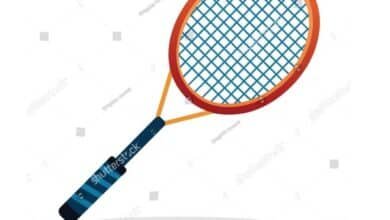Which is the National Sport of India?: It Was Given Step By Step

Which is the National Sport of India?: It Was Given Step By Step India, a country renowned for its rich history, diverse culture, and vibrant traditions, also boasts a dynamic sports landscape. From cricket to kabaddi, sports play a significant role in the daily lives of millions of Indians. Yet, when it comes to defining a single national sport, the question often arises: what is the national sport of India?
Understanding National Sports
Before delving into India’s national sport, it’s essential to understand what a national sport is. A national sport is a sport that holds special cultural, historical, or emotional significance to a country. It represents the country’s identity and often has deep roots in its history and tradition.
The Case for Hockey
Historically, field hockey has been considered India’s national sport. This designation stems from the sport’s longstanding legacy in the country. Hockey has a storied past in India, with the Indian hockey team winning numerous international accolades. The team’s performance in the Olympics, particularly during the mid-20th century, cemented its place in Indian sports history.
India’s dominance in hockey began in the 1928 Amsterdam Olympics, where the Indian team, led by the legendary Dhyan Chand, won the gold medal. This victory was the start of a golden era for Indian hockey, with the team securing gold medals in the 1932, 1936, 1948, 1952, and 1956 Olympics. The sport’s popularity soared during this period, making it the most celebrated sport in the nation.
Hockey’s influence extended beyond the Olympics, with the sport being a significant part of school and college sports curricula. Its rich history and contribution to India’s international sporting prestige make a strong case for hockey being the national sport.
Cricket’s Rise to Prominence
However, over the past few decades, cricket has overshadowed hockey in terms of popularity and influence. The Indian Premier League (IPL), a professional Twenty20 cricket league, has significantly contributed to cricket’s rise. The IPL has transformed cricket into a major entertainment spectacle, drawing massive audiences and generating substantial revenue.
India’s cricketing achievements, including winning the 1983 Cricket World Cup and the 2007 ICC World Twenty20, have further cemented cricket’s position as a sport of national importance. The Indian cricket team’s success on the global stage has made cricket an integral part of the national psyche.
Cricket’s prominence in India is evident in the overwhelming fan base, media coverage, and the sport’s influence on popular culture. It has become a common thread that unites people across various states and regions. The fervor surrounding cricket matches, especially when India plays against traditional rivals, is unparalleled.
Other Popular Sports in India
While hockey and cricket dominate the sports landscape, several other sports hold significant cultural and regional importance in India. Kabaddi, for example, is a traditional sport that has gained prominence through leagues like Pro Kabaddi. The sport, with its roots in ancient Indian traditions, showcases the unique athleticism and strategy of its players.
Football also has a growing fan base in India. The Indian Super League (ISL) has brought renewed attention to the sport, with many fans following local and international matches. The increasing popularity of football reflects a broader interest in diverse sports beyond cricket and hockey.
Additionally, sports like badminton, wrestling, and athletics are gaining traction, thanks to the achievements of Indian athletes on the international stage. Players like P.V. Sindhu in badminton and Bajrang Punia in wrestling have become national heroes, inspiring the younger generation to take up these sports.
The Debate: Cricket vs. Hockey
The debate over whether hockey or cricket should be considered India’s national sport is ongoing. Each sport has its own set of merits and historical significance. Hockey’s legacy as the “national sport” is rooted in its past successes and historical importance. In contrast, cricket’s modern-day prominence and widespread popularity have given it a special place in the hearts of millions.
Ultimately, the designation of a national sport might be less about an official title and more about the sport that resonates most with the people. Both hockey and cricket have made immense contributions to Indian sports and have their own unique place in the country’s sports culture.
The Future of Sports in India
As India continues to evolve, so does its sports culture. The growing popularity of various sports and the success of Indian athletes across different disciplines indicate a promising future for sports in the country. The focus is shifting towards promoting a diverse range of sports and providing better infrastructure and support for athletes.
Government initiatives and private sector investments are playing a crucial role in developing sports facilities and programs. These efforts aim to nurture talent, encourage participation, and elevate the standard of sports in India. The rise of sports academies, grassroots programs, and professional leagues are contributing to the holistic growth of sports in the nation.
Conclusion
In conclusion, while field hockey has historically been regarded as the national sport of India, cricket has emerged as a dominant force in recent decades. The question of which sport is the national sport of India reflects the dynamic nature of the country’s sports culture. Both hockey and cricket hold significant places in the nation’s heart, each representing different eras and aspects of Indian sports history.
As India moves forward, the focus on diverse sports and the development of talent across various disciplines will continue to shape the country’s sporting identity. Whether it’s hockey, cricket, or any other sport, the passion and enthusiasm for sports remain a unifying force that transcends regional and cultural boundaries in India.
Feel free to adjust or expand upon any sections to better fit your blog’s style and audience.




